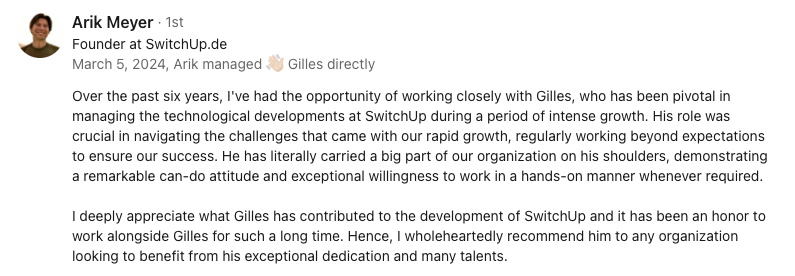Abstract:
The article delves into the challenges and strategies for tech leaders to navigate European Union data privacy regulations, specifically the General Data Protection Regulation (GDPR), when deploying AI chatbots. It underscores the importance of understanding GDPR not just to avoid penalties, but to foster user trust through transparency and respect for data privacy. Key compliance elements include data minimization, explicit user consent, and transparency, which are essential for integrating privacy into chatbot design. The article addresses challenges like managing informed consent and aligning AI's data needs with GDPR principles, and highlights practical solutions like data anonymization and encryption to maintain compliance while fostering innovation. Through examples such as Apple's Siri and WhatsApp's use of the Signal Protocol, the article illustrates how privacy by design can be embedded early in development to reduce risks and boost user confidence. It also discusses tools like consent management platforms and auditing solutions to streamline compliance and enhance trust. By emphasizing privacy by design, regular audits, and effective communication of privacy policies, the article presents a roadmap for balancing innovation with compliance, using case studies of European companies like Snips, UiPath, and Cognigy as successful examples.
Navigating European Union data privacy regulations, especially for tech leaders working with AI chatbots, can be challenging. The General Data Protection Regulation (GDPR) sets strict rules on data handling, making it a key part of building user trust, not just a legal requirement. Understanding these regulations is crucial, not only to avoid penalties but also to demonstrate respect and transparency with user data. This article breaks down the basics of GDPR for AI chatbots, offering practical steps and highlighting challenges in aligning advanced tech with strong privacy standards. Whether managing consent or minimizing data, the insights here aim to guide you through the regulatory landscape, balancing innovation and compliance.
Understanding EU Data Privacy Regulations
Grasping EU data privacy rules is vital for tech leaders, particularly when deploying AI chatbots. GDPR is central to this, setting rigorous data handling standards that impact chatbot operations.
Overview of GDPR for AI Chatbots
GDPR is at the core of Europe's data privacy setup, demanding careful attention to how personal data is collected and used. For AI chatbots, this means adhering to specific standards. Technologies like Natural Language Processing (NLP), Machine Learning (ML), and Automatic Speech Recognition (ASR) significantly impact data privacy, requiring tech leaders to understand these requirements to keep AI chatbots within legal limits and protect user data effectively.
Key compliance elements include collecting only necessary data and obtaining explicit user consent before processing personal information. These guidelines are essential for maintaining compliance and protecting users' privacy.
Key Compliance Requirements
Following GDPR involves several crucial practices that help ensure compliance in AI chatbot operations:
- Data Minimization: Only gather what's essential for the chatbot's function.
- User Consent: Obtain clear, informed consent from users before processing data.
- Transparency and Access: Inform users about their data rights and give them access to their information.
These elements are the foundation of GDPR compliance and are central to integrating privacy into chatbot design.
Embedding GDPR Compliance in Design
Incorporating data protection in chatbot design from the start is crucial for building user trust. By focusing on privacy by design, developers can reduce compliance risks. Early emphasis on compliance not only meets legal requirements but also boosts user confidence.
Challenges in GDPR Compliance for Chatbots
While understanding GDPR's theory is one thing, implementing it practically can be challenging. AI chatbots face unique obstacles in achieving full compliance.
Challenges in Consent Management
Managing informed consent is a significant challenge. Users often find it hard to understand how their data is used, especially with complex AI processing. This highlights the need for clear communication strategies to explain data practices simply.
- Complexity of AI Processing: Users struggle to grasp how AI processes their data.
- Communication Strategies: Clear explanations of data practices are essential.
Navigating Data Minimization
Balancing AI's data needs with GDPR's data minimization principle is tough. Strategic planning is needed to align AI functions with privacy rules. Solutions like data anonymization or aggregation can maintain functionality while protecting user privacy.
- Strategic Planning: Align AI functions with privacy rules.
- Data Anonymization: Protect user privacy while maintaining functionality.
Upholding User Rights
Managing user rights like data access and correction in automated systems adds complexity. Chatbots must be equipped to handle these rights automatically. Understanding both technical capabilities and legal obligations is crucial for designing compliant chatbots.
- Technical Capabilities: Ensure chatbots can manage user rights.
- Legal Obligations: Comply with GDPR requirements for user rights.
Designing AI Chatbots for GDPR Compliance
Ensuring AI chatbots comply with GDPR is a careful process that starts with privacy by design. This not only meets legal needs but also builds user trust.
Privacy by Design in Chatbot Development
Embedding privacy by design means incorporating data protection early. Techniques like data minimization and encryption ensure strong privacy standards. For example, Apple's Siri processes data locally to reduce exposure and reliance on cloud storage.
Encryption, especially end-to-end encryption, is key for securing communications. WhatsApp uses the Signal Protocol to keep messages between users and chatbots private. This method protects data from unauthorized access, reinforcing GDPR compliance and enhancing trust.
Anonymization and pseudonymization protect user identities while allowing data analysis. These methods replace personal information, ensuring privacy without losing data utility. Healthcare chatbots use these techniques to comply with regulations like HIPAA.
Tools and Technologies for Compliance
Several tools simplify compliance by improving data management and security in AI chatbots.
- Data Encryption Tools: TLS/SSL protocols and tools like Signal Protocol ensure data security.
- Consent Management Platforms: Platforms like OneTrust and TrustArc manage user consent efficiently.
- Monitoring Tools: Solutions like Splunk audit interactions for ongoing compliance.
Regular audits, aided by tools like Splunk, track data processing activities and spot compliance gaps. AI governance frameworks like AI Fairness 360 help maintain ethical standards and compliance.
Ensuring User Trust Through Transparency
Building user trust in AI chatbots relies on transparent data handling practices. When users understand and control their data, their trust grows naturally.
Achieving Transparent Data Handling
Clear privacy policies are key to transparent data handling. They should explain how data is collected, used, and accessed. Companies like Microsoft make their privacy policies accessible and easy to understand, which helps build trust.
Tools for Explainability and Communication
Tools that explain data usage in simple terms help users understand how their data is used, fostering trust. Chatbots that answer common questions about data or explain processes simply can greatly improve user engagement.
Significance of Regular Audits and Transparency Reports
Regular audits and transparency reports are vital to keep users informed about data practices. These efforts ensure users stay engaged and confident in data security. Routine audits help identify compliance gaps and align data practices with evolving laws.
Effective Communication of Privacy Policies
Communicating privacy policies effectively involves making them clear and understandable. Simplifying complex language and using visual aids can help.
Simplifying Language and Using Visual Aids
Using plain language and visuals like infographics or short videos can make privacy policies more user-friendly. These methods help convey important information in an engaging way.
Interactive Elements to Enhance Engagement
Interactive elements like FAQs and quizzes can personalize privacy information delivery and improve understanding. A chatbot that quizzes users on privacy settings offers a fun, educational approach.
Keeping Policies Relevant with Feedback Mechanisms
Regular updates and user feedback mechanisms ensure privacy policies stay relevant and user-focused. Encouraging user feedback on privacy practices enhances policy relevancy and strengthens user relationships.
Balancing Innovation with Compliance
Balancing innovation and compliance under GDPR can be tough for startups. However, some European companies show it can be done effectively.
Case Studies of Successful Compliance
- Snips in France: Processes data on-device, reducing data exposure.
- UiPath in Romania: Uses privacy by design, applying techniques like data masking and encryption.
- Cognigy in Germany: Focuses on consent management and on-premises deployment, enhancing compliance and user control.
Best Practices for Ongoing Compliance
- Regular Compliance Audits: Keep systems aligned with regulations and adapt to changes.
- Engaging with Legal and Compliance Experts: Helps navigate complex regulations.
- Ethical AI Implementation: Ensures data protection strategies are solid, fostering trust and innovation.
Practical Steps for Implementing Compliance Strategies
Breaking down GDPR compliance into manageable steps makes it easier. Here are some actionable tips:
Conducting Data Protection Impact Assessments
- Identifying the Need for a DPIA: Evaluate your project for high-risk data processing scenarios.
- Describing Processing Activities: Document data processing activities thoroughly.
- Developing Risk Mitigation Strategies: Work with stakeholders to manage risks effectively.
Collaborating with Legal Teams and DPOs
- Establishing Cross-Functional Teams: Include legal and operational experts in the AI lifecycle.
- Regular Training and Awareness Programs: Keep teams updated on data protection standards.
- Maintaining Clear Documentation and Audit Trails: Keep detailed records for audits and transparency.
Following these practical tips can help organizations integrate GDPR compliance seamlessly into AI chatbot development.
Navigating GDPR for AI chatbots is challenging but offers a chance to build trust and innovation together. Embedding privacy by design helps meet compliance and enhances user confidence. The journey involves mastering data minimization, securing user consent, and maintaining transparency. Embracing tools for encryption, consent management, and regular audits can streamline compliance efforts and foster ethical AI practices. Each step towards strong data privacy not only protects user info but also strengthens your brand's integrity.
You might be interested by these articles:
- AI Revolution in Customer Engagement and UX
- AI-Driven Chatbots In Enhancing Customer Support
- Transforming Customer Service with AI Bots





